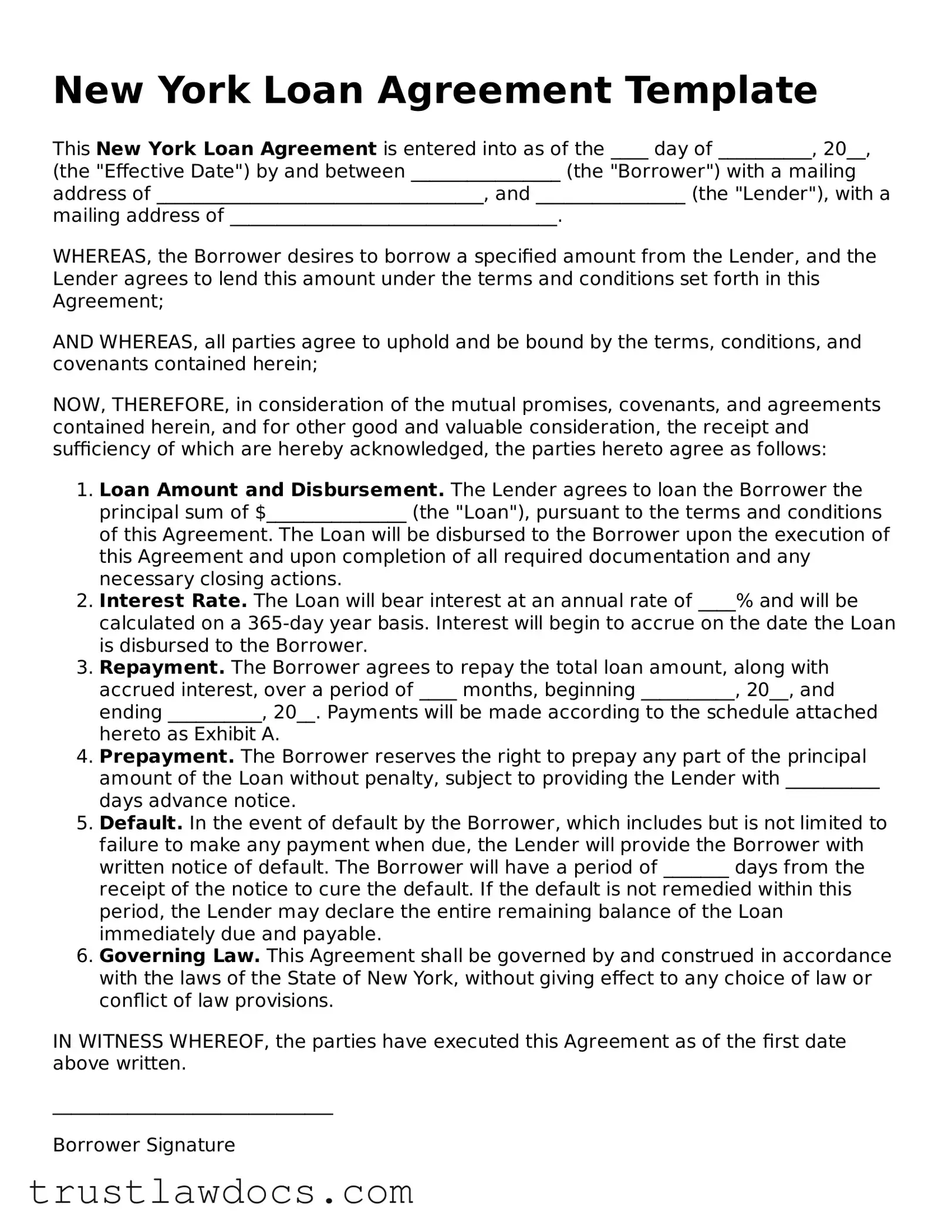The New York Loan Agreement form shares similarities with the Promissory Note in that both are binding legal documents between a borrower and lender. The Promissory Note is a straightforward agreement wherein the borrower promises to repay the lender a specified amount of money, either on demand or at a determined future date. Like the New York Loan Agreement, it details the loan amount, interest rate, repayment schedule, and the consequences of default, making it essential for ensuring the borrower's accountability.
Mortgage Agreements are another type of document closely related to the New York Loan Agreement, particularly because they both involve loans secured by collateral. In a Mortgage Agreement, the collateral is real property. This agreement specifies the loan's terms, including repayment schedule, interest rate, and the lender's rights if the borrower fails to repay the loan. While a New York Loan Agreement can cover various types of loans, both documents serve to protect the lender's investment and outline the borrower's obligations.
The Personal Loan Agreement is similar to the New York Loan Agreement as both are used between individuals, often known to each other, for personal loans. They outline the loan amount, interest rate, repayment terms, and consequences of non-repayment. The key difference typically lies in the formality and the specifics of the terms, with the New York Loan Agreement possibly being more comprehensive and formal, given the diverse legal and financial contexts it may be used in.
Deeds of Trust share a foundational principle with the New York Loan Agreement, especially when securing a loan with property. Like a Mortgage Agreement, a Deed of Trust involves a borrower (trustor), a lender (beneficiary), and a third party (trustee) who holds the property title until the loan is repaid. The similarities lie in the protection it offers to the lender and the detailed stipulations regarding loan repayment, interest rates, and the handling of defaults.
Business Loan Agreements, similar to the New York Loan Agreement, are specifically tailored towards lending for business purposes. These agreements detail the loan's terms, such as the amount, interest rate, repayment schedule, and collateral, if any. The business aspect often introduces additional complexities, such as clauses on business performance or use of the loan, distinguishing these agreements with a focus on business operations and objectives.
Credit Facility Agreements resemble the New York Loan Agreement because they provide a borrower access to a specified amount of funds from a lender, which can be used over time. These agreements outline the terms under which funds can be borrowed, repaid, and re-borrowed, including interest rates and repayment schedules. The flexibility in borrowing and repayment under a Credit Facility Agreement parallels the structured yet adaptable nature of New York Loan Agreements in accommodating various loan scenarios.
Student Loan Agreements, while designed for a specific purpose, share key components with the New York Loan Agreement. They outline the loan amount, interest rate, repayment terms, and deferment options, focusing on the borrower's commitment to repay the education-related expenses. Both types of agreements are geared towards ensuring the borrower understands their repayment obligations and the terms under which the loan must be repaid.
Lastly, the Lease-Purchase Agreements bear resemblance to the New York Loan Agreement in the sense that they both involve a form of financing for the acquisition of goods or property. In a Lease-Purchase Agreement, the lessee makes regular payments in exchange for the use of an asset, with an option to purchase at the end of the term. This agreement outlines payment amounts, schedules, and the purchase option terms, similar to how a New York Loan Agreement specifies loan repayment conditions and obligations.
